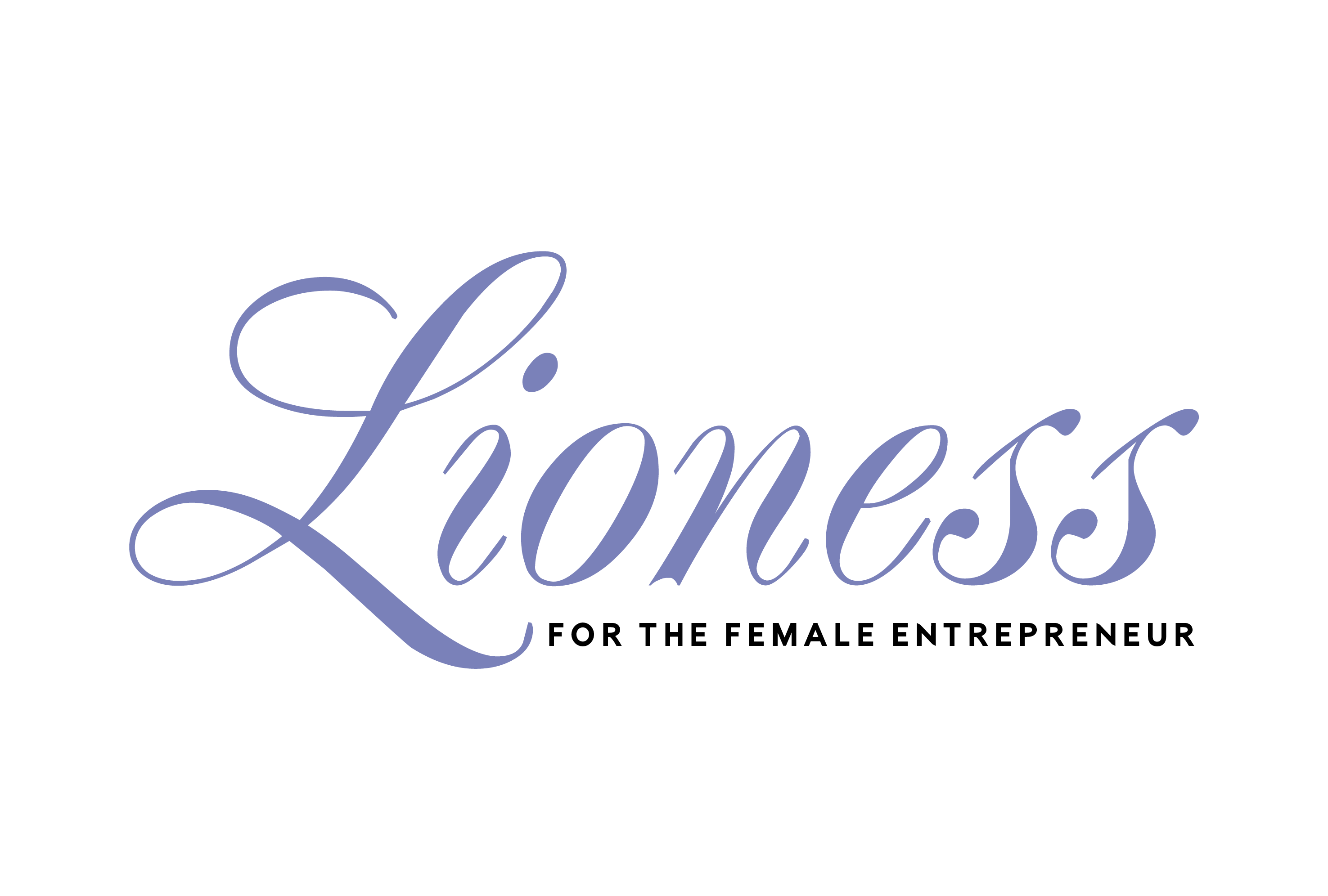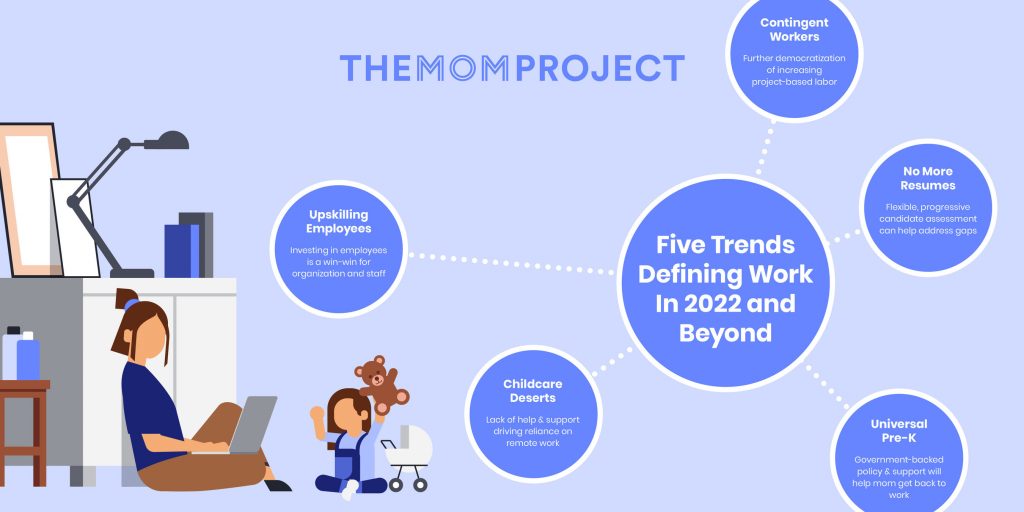The Mom Project, a leading platform for moms to discover their economic potential, outlined five major work trends that will shape the industry in 2022.
The coronavirus pandemic has altered every aspect of life, and the workplace is no exception. In 2020, 2.3 million women left the U.S. workforce, either through job loss or being forced to quit in order to care for their children. This led to the lowest levels of women in the labor force since the 1980s. Vice President Kamala Harris declared it “a national emergency.”
Twenty months into the pandemic, Americans are still leaving their jobs out of necessity or frustration. Approximately 4.4 million Americans left their jobs in September, according to data from the U.S. Job Openings and Labor Turnover report. Currently, there are 10.4 million job openings, surpassing pre-pandemic levels. There were 6.8 million job openings in November 2019.
The impact on unemployment
While the unemployment rate fell to 4.6 percent in October from 4.8 percent in September, according to the U.S. Department of Labor, it is still well above the pre-pandemic jobless rate of 3.5 percent.
“While the pandemic has been hard and heartbreaking for so many, it has shed a light on many of the inequities that exist in the workplace,” said Allison Robinson, The Mom Project CEO and founder. “Companies are in dire need of talented employees. They will have to re-evaluate many of their antiquated business practices in order to attract and retain them. The power has shifted from employer to employee.”
Flexibility, support and autonomy are some of the new non-negotiables employees are demanding as companies struggle to fill vacant positions. The Mom Project sees many of these same desires from its community of more than 500,000.
Here are five trends that will define work in 2022 and beyond.
Work trends for 2022
Increased dependency on contingent workers
According to Gartner research, 32 percent of surveyed organizations are replacing full-time employees with contingent workers as a cost-saving measure. Business spending in the contingent workforce area rose 22.8 percent year over year.
While contingent labor is on the rise, these opportunities aren’t equal and accessible across the board. It’s necessary to identify certain sectors where on-demand project-based labor can be utilized and democratize the process and opportunities, which also helps with a company’s DE&I efforts because contingent labor is often a pathway to high-earning jobs, but location may restrict top candidates.
In a recent survey conducted by WerkLabs, the data and insights division of The Mom Project, full-time employees are about 15 percent more optimistic than contingent workers that they will achieve their career goals. A primary concern and consideration factor for working on a contingent basis is a perceived setback to their careers, namely in the form of maintaining competitive pay and respect.
According to contingent workers surveyed, the greatest factors contributing to a prospective contract’s attractiveness are competitive pay, remote work and employer supportiveness. Of contingent workers surveyed, ~75% report having the ability to work remotely or from a location of your choosing as being a factor in their decision to work on a contingent basis.
“Childcare deserts” driving reliance on remote work
Childcare providers are currently understaffed. Many cited low wages as an obstacle, and others concerned about working with unvaccinated children.
With a lack of help and support, many moms and families have to prioritize family over career. Not only are there shortages in childcare, but there are also skyrocketing costs; the cost of childcare increased by half during the pandemic.
These holes in opportunity and accessibility created “childcare deserts” throughout the country. Getting this support provides moms a realistic chance to balance family and career. This significantly bolsters labor across the country.
“During the pandemic, moms have reported even more difficulty in finding adequate child care solutions, leaving them often unable to commit to long-term career opportunities, and particularly being left behind with regard to opportunities for career advancement,” said Dr. Pam Cohen, President of WerkLabs.
Getting rid of resumes
Hisayuki “Deko” Idekoba, chief executive of Japan’s Recruit Holdings, which operates Indeed and Glassdoor, recently made headlines for questioning the hiring process and its reliance on resumes.
Companies are in desperate need of help due to the “Great Resignation”. The hiring process should shift from trying to match a prospective employee’s resume with a specific role within the organization. Instead, companies should look at talent overall and invest in a candidate via support and upskilling to fit into that role or potentially another one.
It’s a more progressive and flexible way of assessing candidacy, and a win-win for both employee and employer.
Upskilling/investment in new, current employees
Currently there is a mismatch between demand for great talent and available supply. In order to help combat this, companies should invest in upskilling current employees and prospective candidates who are a great fit for a certain role or opportunity but may lack the certain know-how or certifications.
When this occurs, the organization gets the skills they lack, while the talent has a meaningful boost to income potential. By investing in the employee, companies can also further their DE&I efforts making these resources available to everyone.
About The Mom Project
The Mom Project is the leading platform for moms to discover their economic potential. Serving over 500,000 moms and 3,000 companies through its robust suite of hiring, education and retention solutions, The Mom Project is supporting mothers in finding success on their own terms. The Chicago-based company was founded in 2016 by Allison Robinson, who serves as CEO, and has raised $116M in funding to date. Serena Williams joined The Mom Project as a Strategic Advisor in 2020 to further mobilize the mission.








Add Comment